Guest blog by Madeleine Smith, University of Leeds
This is the fourth of a series of blogs written by Liberal Arts students at the University of Leeds to celebrate the Electrical Association for Women (EAW) centenary in 2024. This project has been supported by Professor Graeme Gooday. These blogs on early EAW activities are based on themes that the students selected from reading digitised versions of the first two volumes (1926-1935) of The Electrical Age (for Women). You can read Madeleine’s first blog here.
Introduction
The second volume of the Electrical Association for Women’s journal, the Electrical Age, covers the period from July 1930 to October 1935 and shows significantly greater focus on safety-related themes in the product advertisements than the first volume (1926-1930). This blog post examines the increasing number of advertisements mentioning safety, analysing the language used and its apparent targeting of a gendered audience, tracking how this correlates with a greater emphasis on safety issues in the Electrical Age’s editorials.
Comparing safety coverage in volumes 1 and 2
Within the first volume of the Electrical Age journal, little of the advertising focuses on safety in electrical products. However, some editorials written by EAW Director Caroline Haslett suggest the importance of safety for electrical appliances in the home. An example of this in the 10th (October 1928) issue of Vol 1 is Haslett’s editorial piece, ‘Safety First in the Home’ which focuses attention on the safety benefits of the 3-pin plug (see above). This editorial examines the importance of the earthing process by looking at the difference between the 2-pin plug and the 3-pin plug. This third pin allowed for a surge in the electrical current to be sent safely through the earth instead of passing through a human user (with the attendant risks of injury or even death by electrocution). Thus the 3-pin plus promised the accomplishment of electrical safety without any special skill being required of ordinary householders.
Haslett’s editorial focuses on the importance of safety as a result of discussion with engineers, while also overriding the view of some engineers that earthing was not necessary if electrical installations were properly insulated:
“…we felt that as women our Specification [of the three-pin plug] would be most worthwhile if we put forward what we considered necessary for the woman in the home, rather [than] leaving the engineer himself to determine what would be the best method to ensure safety”
(The Electrical Age for Women, October 1928, p.368).
Three years later in 1931, the fears of female servants were a major concern obstructing the progress of the EAW in implementing a programme of electrification. In speaking to the Institution of Electrical Engineers, Haslett reported that ‘continuing fear of electricity among female staff’ highlighted the need for women at home to trust that electricity could be made safe (Gooday, p.89). This statement further highlights how important it was to convey to readers of the Electrical Age journal that of safety could indeed be accomplished if only the correct form of electrical equipment was installed in the home.
The beginning of safety-related advertising
In volume 2 of the ‘Electrical Age’ journal (launched in 1930) there is a significant increase in the mention of safety both in editorials and advertising, clearly following Caroline Haslett’s safety agenda. The first mention of safety in the volume 2 of The Electrical Age is in the first issue of July 1930. As seen in the below Reyrolle advertisement for electric cookers and water heaters, the key feature highlighted is ‘safe connectors’.
In the same issue there is another advertisement from Lewcos Cables with the title “Wiring permanent and reliable” (Vol.2. No.1, p.38) which emphasizes that getting an expert to fit your electric wiring is a much safer option that attempting to fit them yourself, reiterating the importance of earthing. An advertisement for the ‘Domestic Electrification Company’ in the second issue (see illustration below) sports the title ‘Safety First’ displaying the use of a safety iron: ‘With the ‘Dolphin Automatic Safety Iron you can protect yourself from worry and you household from real and serious danger.’ This advertisement in particular plays on the anxiety of the readers, implying that without that particular safety iron a deadly accident was much more likely.
Earthing
As mentioned in Caroline Haslett’s 1928 editorial discussed above, earthing is a fundamental concept in electrical safety. The language of implementing proper earthing techniques was clearly transferred from editorials to content in the October 1930 issue in an article aimed at Girl Guides titled ‘Why Washing Machines Must be Earthed’. This shows that the EAW wanted the importance of earthing to be learnt by girls from a young age: as electricity was still scary for many adults, if their children were learning about the safety of electricity, they might pass this confidence on to their parents or guardians.
In fact, in almost every issue of Volume 2 of the Electrical Age there is an advertisement that specifically focuses on earthing, whether it be a large company mentioning the importance of earthing or the recurring adverts at the end of most issues that largely highlight the same theme. One example of this is the advertisement titled ‘Earthing for Safety’ which is commonly seen at the end of many of the volume 2 issues including issue 4 below.
Editorial articles in volume 2
Throughout the second volume of The Electrical Age there are many articles and editorials featured that do not directly promote safety but encourage readers to think about their appliances and possibly take responsibility for safety into their own hands. These editorials take an educational role and sport titles such as ‘Safety in the home’ (No.9, p.348), ‘Useful information for the countrywoman’ (No.11, p.451), ‘Useful hints for the homemakers’ (No.14, p.564) and ‘Spring cleaning your electrical apparatus’ (No.16, p.648).
All of these editorials/articles focus in particular on helping the readers feel safe and comfortable with their electrical appliances. Even though these articles don’t explicitly mention safety, it is a clear underlying theme in Haslett’s editorial policy. These articles focus mainly on learning a certain level of understanding about appliances, offering step-by-step instructions to help householders install and use electricity safety; directions are even offered on how to keep devices clean (to ensure that stray liquids or grease did not create easy routes for electrical currents). We can surmise that reading these articles would enable readers to gain confidence with electricity and take self-assured ownership of their own appliances, so that they didn’t have to pay others to help maintain and clean them.
These editorials coupled with the intensive use of safety themes in advertisements throughout volume 2 is quite a contrast to volume 1 which mainly focused on the economy of electricity and its simplicity/usefulness.
Typography
Looking at the language and fonts used in the second volume of the Electrical Age journal illustrates concerns around the importance of safety for domestic electricity usage. The extract below is taken from the 5th issue of volume 2 and is a clear example of how the National Register of Electrical Installation Contractors used persuasive, almost prescriptive language, and bold, large lettering, making sure the reader wouldn’t miss it.
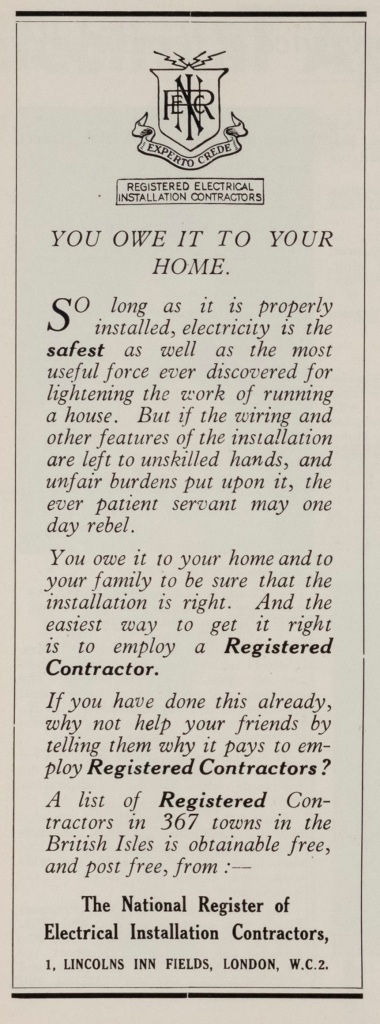
Clearly directed towards housewives, e.g. showing using examples of cooking dinner and caring for the children, the words ‘Safest’ and ‘Registered contractor’ underlined immediately draw the readers’ eyes to the key terms. The persuasive heading makes readers feel that if they don’t think of safety as a key element to electricity, they are doing an injustice to their family and home.
Within other issues of volume 2 there is recurrent use of rhetorical questions directed towards the readers, asking they consider safety an important aspect of electricity. It is hard to overlook this safety theme while reading the second volume of the Electrical Age.
Bibliography
The Electrical Age (for Women) Volumes 1 and 2
Graeme Gooday ‘Domesticating Electricity (Pickering and Chatto, 2008)
About the author
My name is Madeleine Smith, and I am a second-year undergraduate student studying Liberal Arts (majoring in Sociology) at the University of Leeds. I am currently living in Leeds while studying my degree however I am originally from a very small town in West Wales. I have loved studying the EAW and having had very little prior information surrounding the organisation, I am continuing to find it fascinating how much information the Electrical Age journals hold in particular how many of the amazing women motioned have little recognition outside of the EAW journal.
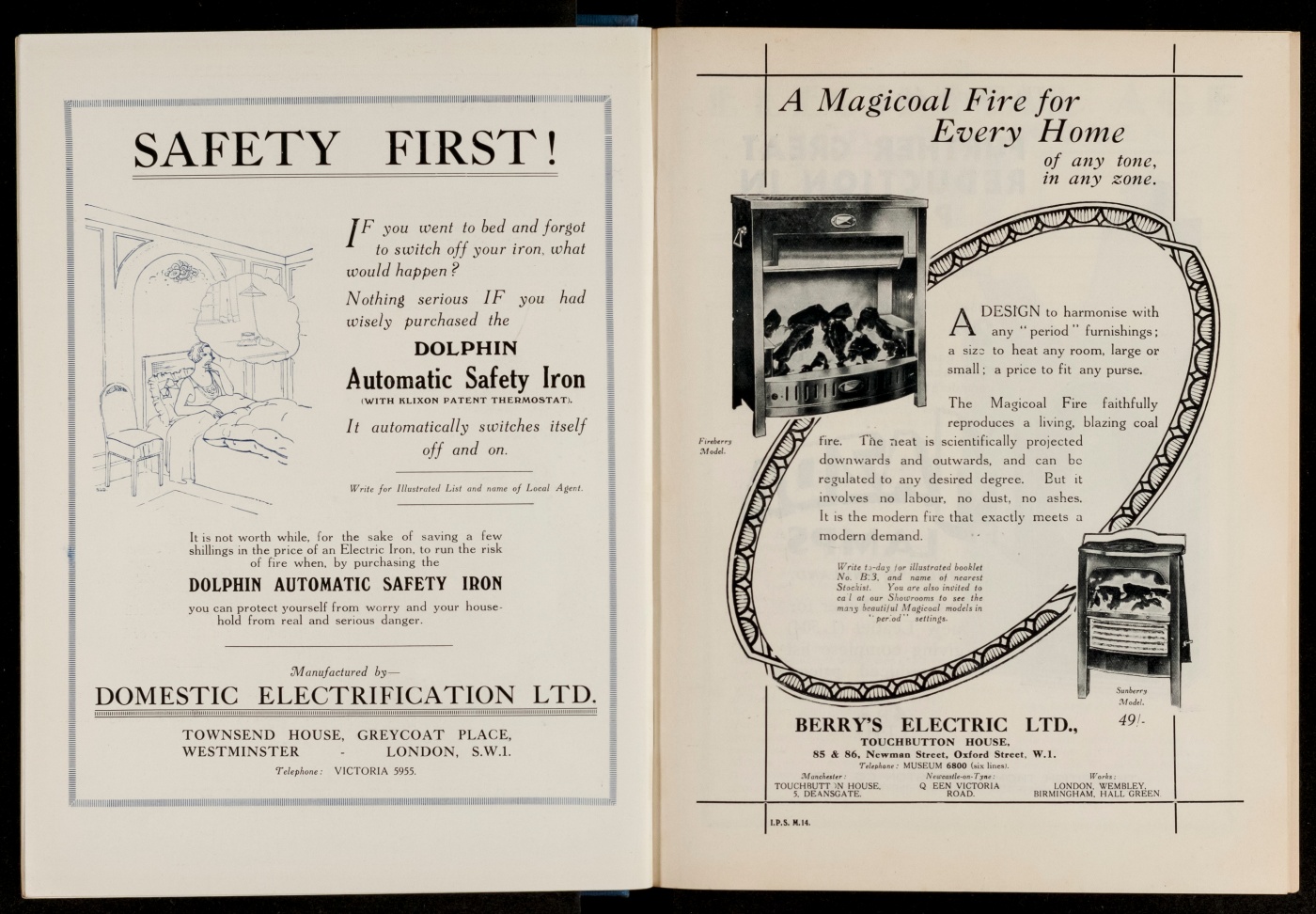

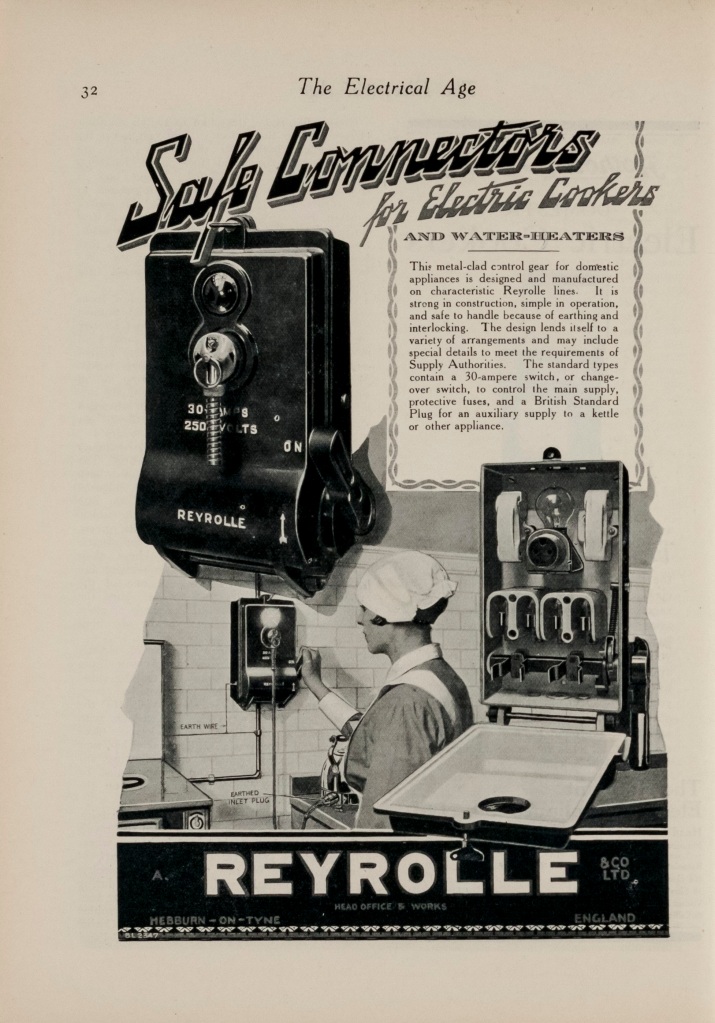
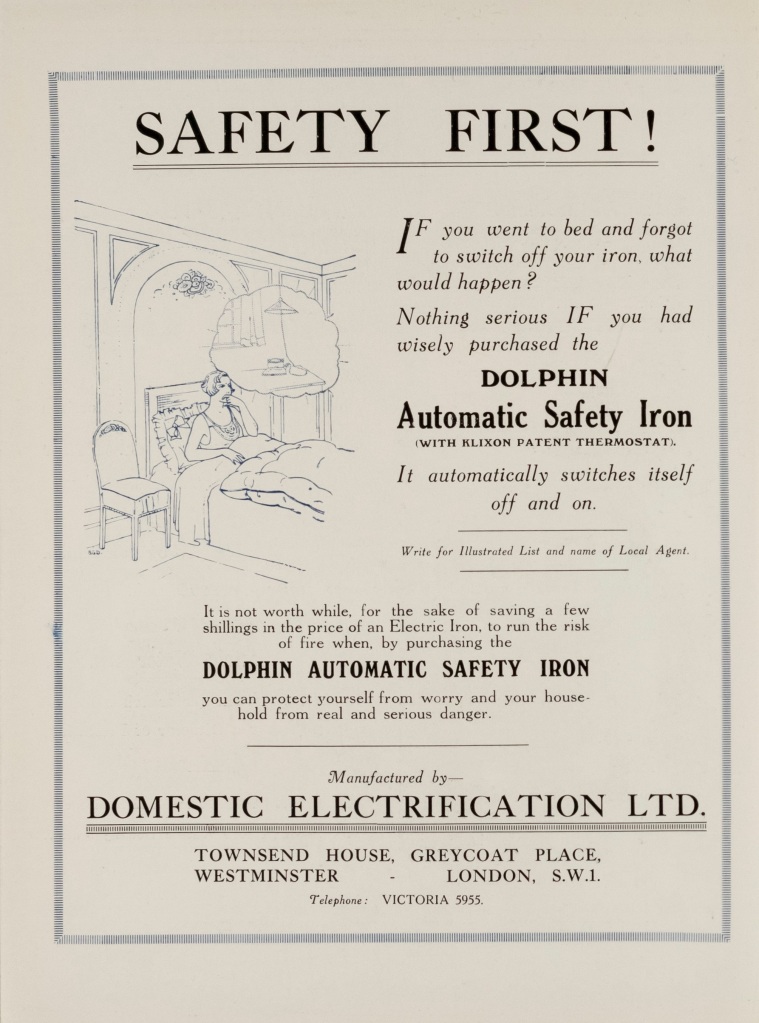
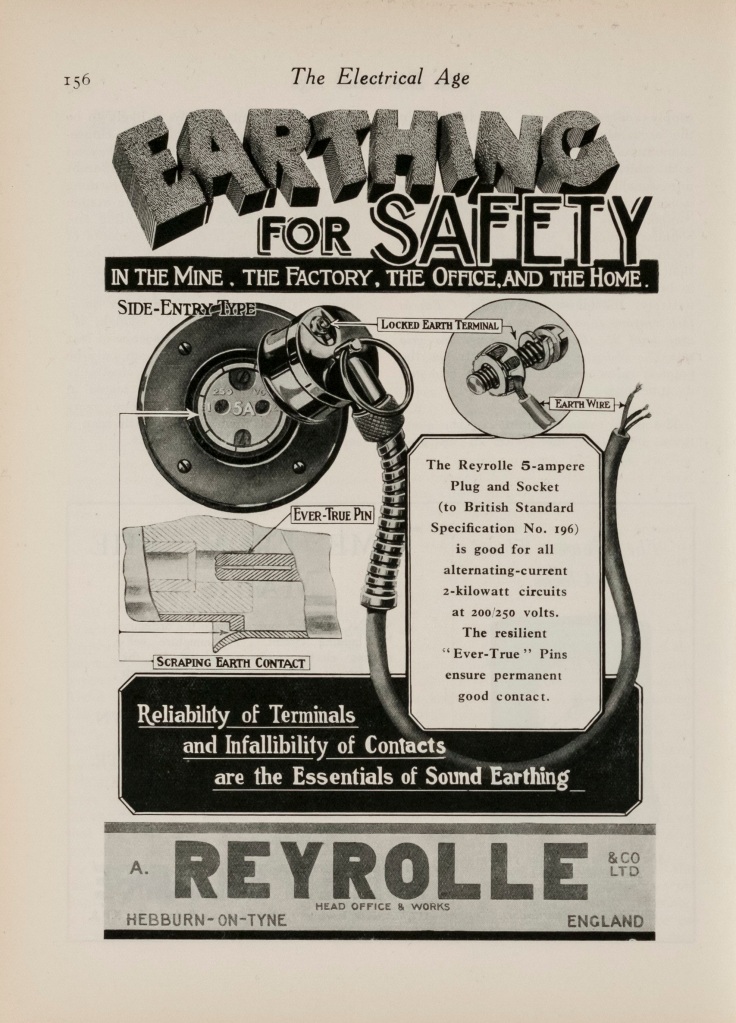
Leave a comment